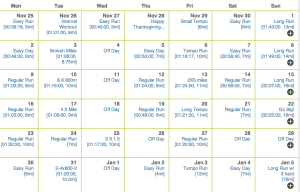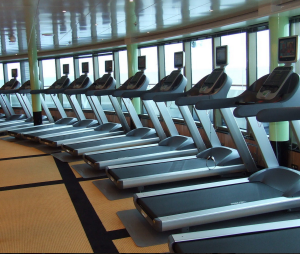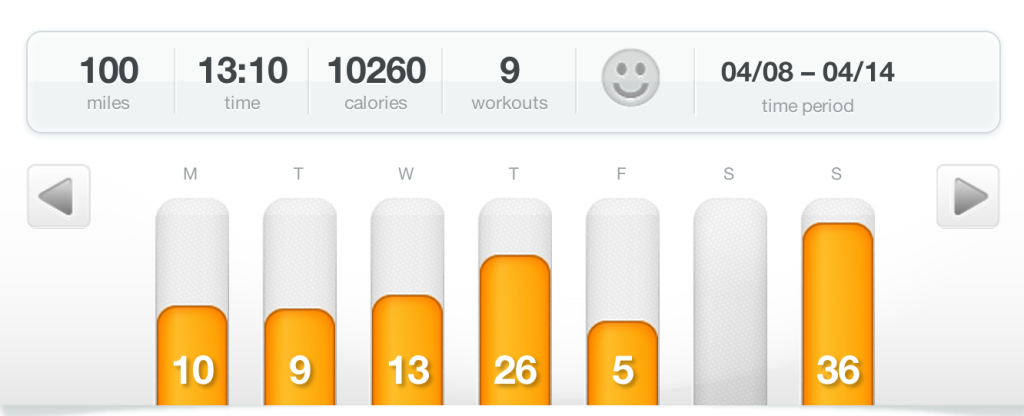New Year’s Day is famously known for the beginning of resolutions. Everyone likes to make resolutions in the days leading up to it and many of these resolutions are about being more active for the new year. The desire to be more active is to help lose weight after the holiday season, to get in better shape during the slow winter months, and to get more fit (maybe to accomplish some other goal). It is very obvious about how many people make these resolutions when the busiest day of the year for fitness centers and gyms is January 1 with January 2 a close second.
The sad part is that many well-intentioned resolutions are completely forgotten by the end of January. It is not because of people not wanting to achieve their goals but is instead because of not following some simple steps. Here are 3 solutions for keeping resolutions as we start the New Year.
3 Solutions for Keeping Resolutions
1) Set Realistic Goals
One of the biggest reasons for failing to continue with New Year resolutions is setting unrealistic goals. For some reason, people think that if they set a goal and have the willpower, they will be able to achieve it. That is not the case! Just thinking that I can run a 3 hour marathon this year does not mean that I could do it! That is not a realistic goal.
The secret in setting fitness goals is to choose a goal that is challenging yet realistic. If you have not done any workouts in the last 3 months (or 3 years), just plan on committing to workout 3 times a week or to do a 15 minute workout each day. If you have been running 30 miles per week, think about setting a goal to do some speed work as part of your running routine or to add some hills into your workout.
Here are some of the types of goals that you can set to help you achieve your fitness goals:
- Overall Goal – this is the goal of where you want to be with your fitness or activity over the course of the year or several months. It may also be a certain amount of weight that you want to ultimately lose or a certain time you want to run a particular distance in.
- Intermediate/Segment Goals – it is essential to have these types of goals in your fitness plan. If your overall goal is to lose 20 pounds, set some intermediate goals (like lose 2 pounds a week or to lose 5 pounds in one month). If your overall goal is to run a marathon, make your intermediate goal to accomplish some longer runs or run a half-marathon.
- Peripheral “Goals” – these are not really goals that you set but rather observe as you work on your overall goal. A peripheral goal may be to lose a few pounds while your overall goal is to run 20 miles a week. This goal is something that you would like to achieve but you do not concentrate on. Rather, it is achieved as you work towards your primary goal. In my case, my goal for next year is to run a certain time in the marathon. I would also like to lose a few pounds as I work toward that goal. By concentrating on my running performance, I will also be able to lose some weight. It is not my area of concentration but is something I keep an eye on as I work toward my overall goal.
Some Goal Examples
Here are some suggestions of some fitness goals you could have for this year.
- Lose some weight (set a realistic number)
- Be more active (set an amount of time per week that you want to be active)
- Try to run faster
- Run a race
- Walk (x) miles per week
- Ride a bike to work (x) times per week
2) Keep a Log
It is extremely valuable to have a log of your physical activity. The more you write down, the more encouraged you are to continue with your program. If you are able to find some type of online log or sharing app, it will enable you to do it with a friend. My running log has about 15 running friends on it and we are all able to see each other’s work. It helps me to stay consistent knowing that my friends are going to notice if I miss many days. It also helps me, as a runner, so I can go back over the weeks to examine how my training had been going and to see what my workouts had looked like.
Some of the sites that come to mind (I do not have experience with all of them) are:
- Dailymile – this is my personal log of choice right now
- RunKeeper – this is a very popular app/website combo that I have on my iPhone for the few times I do not have a watch with me
- MyFitnessPal – another very popular tracking service for workouts and diets
- Fitocracy
- DailyBurn
Many of the fitness/activity tracking logs have smartphone apps as well so you can always update your logs while you are out on the road or at restaurants. The more you put down, the more accountable you will be to yourself and to your friends.
3) Schedule Workouts
If you are on the road a lot, count on your workout not getting done unless you schedule it. Treat your workouts like appointments and do what it takes to keep them. It may mean doing the workout at non-preferred times but you will feel happy about getting it in. This is one of the good things about training for races – you may be able to get away skipping a couple of workouts over the course of the training program but too many and your performance will suffer.

My training schedule
Busy lives are one of the chief reasons why we do not keep fitness resolutions. The more diligent you are about scheduling your workouts, the more certain it will be that you will get them done. I have done treadmill workouts at every hour of the day because of busy schedules. Much of my training for months took place sometime between 11PM – 2AM. 🙂 A couple of years ago, I started a running streak just before the end of the year (it lasted 110 days or so of at least 2 miles a day). During the course of that streak, my wife had a baby. 🙂 That meant that I did a two mile run in the parking lot of the hospital after I left my wife asleep. If I had not scheduled a streak, it never would have happened.
Summary
If you follow these three simple solutions for keeping resolutions, you will be able to keep the fitness resolutions you make for the new year. Feel free to share what some of your New Year’s resolutions are in the comments.











